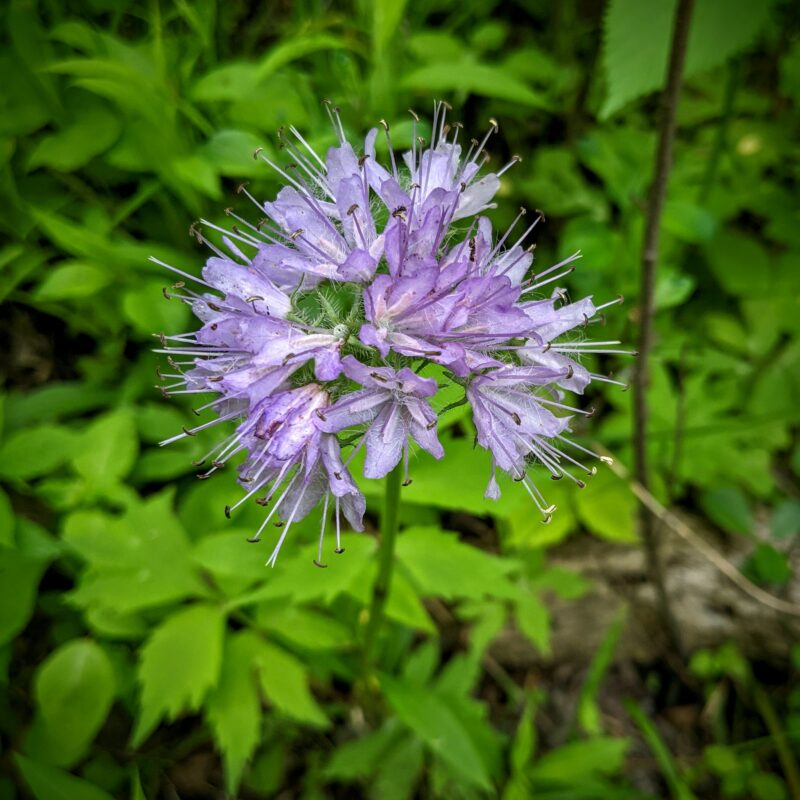Virginia WaterleafHydrophyllum virginianum
Native, potentially aggressive, erect, perennial forb. Suited as an aggressive groundcover for shady areas and as a woodland wildflower. It is also suited for shady rain gardens in most soil conditions, especially loams. Because it is aggressive as a ground cover, it is suited for vegetated swales and soil stabilization areas in shady places.
USDA symbol: HYVI
General Information
| Plant Type | Forb |
|---|---|
| Height | 1 to 2 feet |
| Light Exposure | Part Sun, Shade |
| Soil Moisture | Medium |
| Bloom Color | Purple |

Tolerances
| Flooding / Inundation Tolerance | High |
|---|---|
| General Resilience | 7 |
| Salt Tolerance | Unknown |
| Stress Tolerance | General Disturbance |
Pollinator Value: High
| Bloom Months | May |
|---|---|
| Larval Host of | Bees |
| Specific Pollinators Hosted | Andrena geranii |
| Pollinator Benefit | Insect Pollinated, Provides Nectar |
Project Planning
| Project Type | Erosion Control, Restoration, Shoreline Buffer |
|---|---|
| Coefficient of Conservatism | 4 |
| Herbivore Sensitivity | Low |
| Lifespan | Perennial |
| Rate of Spread | Fast |
| Soil Stabilization | Shallow |
| Vegetative Reproduction | Clonal |
Range
| County | Aitkin, Anoka, Beltrami, Benton, Big Stone, Blue Earth, Brown, Carver, Cass, Chippewa, Chisago, Clay, Clearwater, Cottonwood, Crow Wing, Dakota, Dodge, Douglas, Faribault, Fillmore, Freeborn, Goodhue, Grant, Hennepin, Houston, Itasca, Jackson, Kanabec, Kandiyohi, Koochiching, Lac qui Parle, Le Sueur, Lincoln, Lyon, Martin, McLeod, Meeker, Mille Lacs, Morrison, Mower, Murray, Nicollet, Nobles, Norman, Olmsted, Otter Tail, Pine, Pipestone, Pope, Ramsey, Red Lake, Redwood, Renville, Rice, Rock, Scott, Sherburne, Sibley, St. Louis, Stearns, Steele, Stevens, Swift, Todd, Wabasha, Wadena, Waseca, Washington, Watonwan, Winona, Wright, Yellow Medicine |
|---|---|
| Ecoregion | Driftless Area, Lake Agassiz Plain, North Central Hardwood Forests, Northern Glaciated Plains, Northern Lakes and Forests, Northern Minnesota Wetlands, Western Cornbelt Plains |
| Approximate Eco Province | Eastern Broadleaf Forest, Laurentian Mixed Forest, Prairie Parkland, Tallgrass Aspen Parklands |
